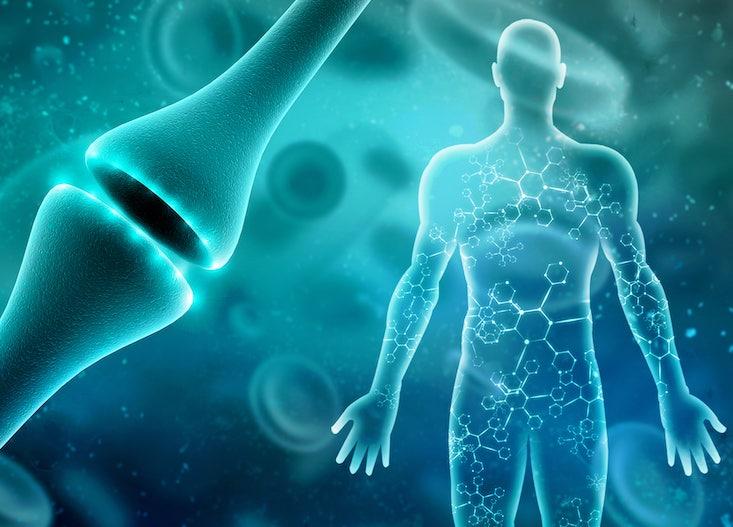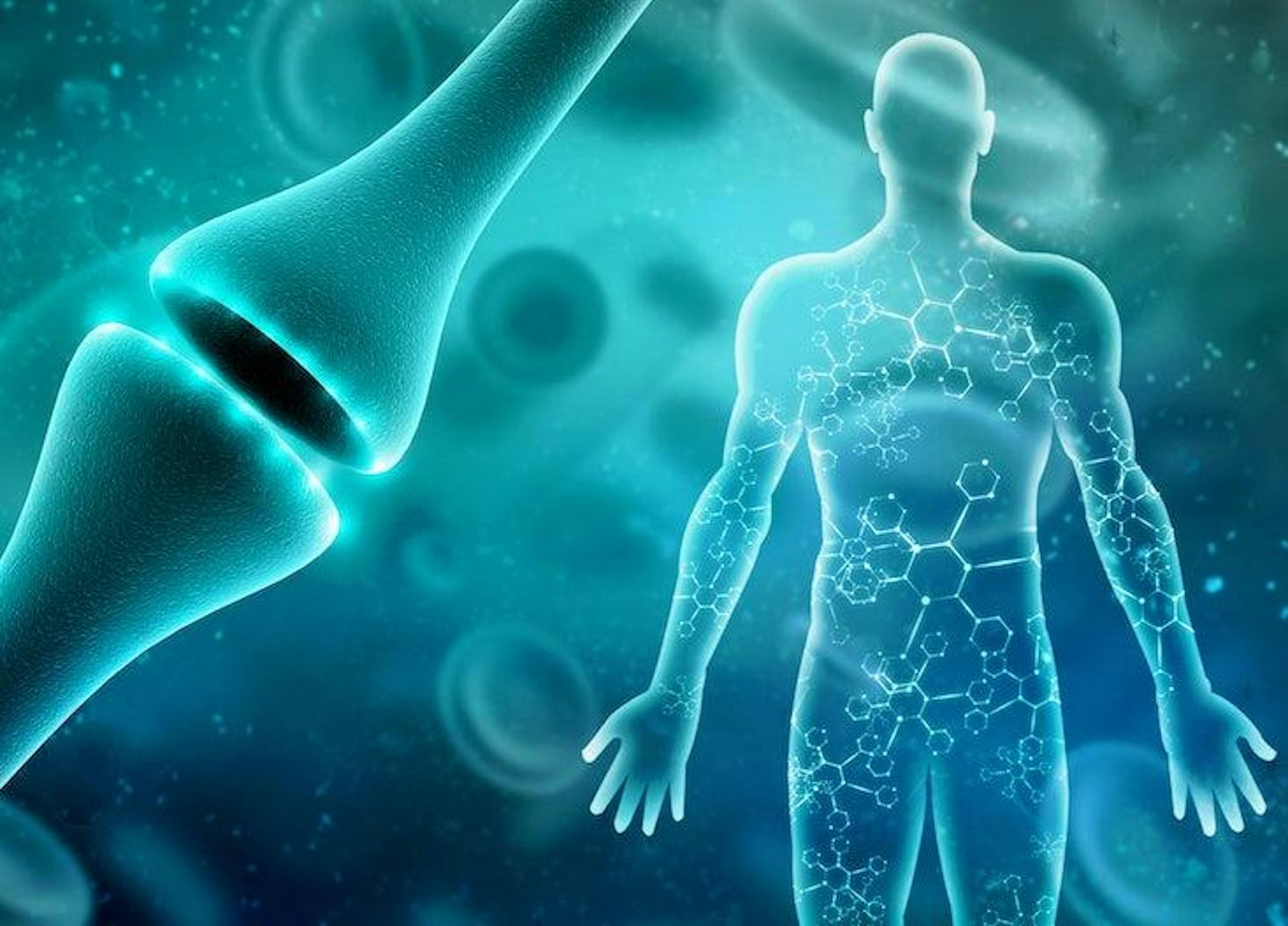
Life seems to be tied to bioelectricity at every level. The late electrophysiologist and surgeon Robert Becker spent decades researching the role of the body’s electric fields in development, wound healing, and limb regrowth. His 1985 book, The Body Electric: Electromagnetism and the Foundation of Life, was a fascinating deep dive into how the body is electric through and through—despite our inability to see or sense these fields with our unaided senses. But Becker’s work was far from complete.
One scientist who has taken up Becker’s line of inquiry is Michael Levin. He got hooked on the subject after he read The Body Electric. Levin has been working on “cracking the bioelectric code,” as a 2013 paper of his put it, ever since. “Evolution,” Levin has said, “really did discover how good the biophysics of electricity is for computing and processing information in non-neural tissues,” the many thousands of cell types that make up the body, our word for trillions of cells cooperating. “It’s really hard to define what’s special about neurons,” he told me. “Almost all cells do the things neurons do, just more slowly.”
How do disarranged cells and organs intuit what do to?
His team at Tufts University develops new molecular-genetic and conceptual tools to probe large-scale information processing in regeneration, embryo development, and cancer suppression—all mediated by bioelectric fields in varying degrees. This work involves examining, for example, how frogs, which normally don’t regenerate whole limbs (like salamanders do) can regrow limbs, repair their brains and spinal cords, or normalize tumors with the help of “electroceuticals” (a pun based on “pharmaceuticals”). These are therapies that target the bioelectric circuits of tumors instead of, or together with, chemical-based therapies. Bioelectric fields are, in other words, more powerful than we have suspected and perform many surprising roles in the human body and all animal bodies.
Nature seems to have figured out that electric fields, similar to the role they play in human-created machines, can power a wide array of processes essential to life. Perhaps even consciousness itself. A veritable army of neuroscientists and electrophysiologists around the world are developing steadily deeper insights into the degree that electric and magnetic fields—“brainwaves” or “neural oscillations”—seem to reveal key aspects of consciousness. The prevailing view for some time now has been that the brain’s bioelectric fields, which are electrical and magnetic fields produced at various physical scales, are an interesting side effect—or epiphenomenon—of the brains’ activity, but not necessarily relevant to the functioning of consciousness itself.
A number of thinkers are suggesting now, instead, that these fields may in fact be the main game in town when it comes to explaining consciousness. In a 2013 paper, philosopher Mostyn Jones reviewed various field theories of consciousness, still a minority school of thought in the field but growing. If that approach is right, it is likely that the body’s bioelectric fields are also, more generally, associated in some manner with some kind of consciousness at various levels. Levin provided some support for this notion when I asked him about the potential for consciousness, in at least some rudimentary form, in the body’s electric fields.
“There are very few fundamental differences between neural networks and other tissues of bioelectrically communicating cells,” he said in an email. “If you think that consciousness in the brain is somehow a consequence of the brain’s electrical activity, then there’s no principled reason to assume that non-neural electric networks won’t underlie some primitive, basal (ancient) form of nonverbal consciousness.”
This way of thinking opens up exciting possibilities. It recognizes that there is perhaps some intelligence (and, to some thinkers, maybe even consciousness) in all of the body’s bioelectric fields, which are efficient sources of information transfer and even a kind of computation. In his work, Levin pieces together how these fields can contain information that guides growth and regeneration. He sometimes describes these guiding forces as “morphogenetic fields.” It may sound like a mystical notion, but it’s quite physical and real, backed up by hard data. This information, Levin said, can be stored in multicellular electric fields “in a way that is likely very similar to how behavioral memories—of seeing a specific shape for example—are stored in a neuronal network.”
Take the case of a frog. “To become frogs, tadpoles have to rearrange their faces during metamorphosis,” Levin said. “It used to be thought that these movements were hardcoded, but our ‘Picasso’ tadpoles—which have all the organs in the wrong places—showed otherwise.” The apparent know-how that these bioelectric fields demonstrate, in terms of growing normal frogs in very un-normal circumstances, is uncanny. “Amazingly, they still largely became normal frogs!”
How do disarranged cells and organs intuit what do to? Levin, and the renowned philosopher and cognitive scientist Daniel Dennet, recently tackled this question in a rather provocatively titled article, “Cognition All the Way Down.” Something like thinking, they argue, isn’t just something we do in our heads that requires brains. It’s a process even individual cells themselves, and not requiring any kind of brain, also take part in. To the biologists who see this as a cavalier form of anthropomorphization, Levin and Dennet say, “Chill out.” It’s useful to anthropomorphize many different kinds of life, to see in their parts and processes a variety of teleological experience. “Ever since the cybernetics advances of the 1940s and ’50s, engineers have had a robust, practical science of mechanisms with purpose and goal-directedness—without mysticism,” they write. “We suggest that biologists catch up.”
With respect to purposes and teleology (goal-directed behavior), they make their key point clear: “We think that this commendable scientific caution has gone too far, putting biologists into a straitjacket.”
A promising route for better understanding may be found, they write, in “thinking of parts of organisms as agents, detecting opportunities and trying to accomplish missions.” This is “risky, but the payoff in insight can be large.” For Levin, at least, bioelectric fields are key mechanisms for this kind of collective decision-making. These fields connect cells and tissues together, allowing, along with synaptic connections, for rapid information exchange, not only with immediate neighbors but distant ones as well.
These communication channels are involved in the emergence of cancer, which means that, according to Levin, they can potentially be useful in curing some forms of cancer. “You can [use bioelectric fields to] induce full-on metastatic melanoma—a kind of skin cancer—in perfectly normal animals with no carcinogens or nasty chemicals that break DNA,” he said. You can also use these same fields “to normalize existing tumors or prevent them from forming.” He’s currently moving this work to human clinical models.
The importance of bioelectric fields is all about connection, information, and computation. These ingredients equal cognition for Levin and Dennett, which is, for them, a continuum of complexity that has developed over a billion years of biological evolution. It’s not an all or nothing kind of thing but a spectrum—one that plays a role in development, evolution, cancer, and in the workings of consciousness itself.
Tam Hunt is a philosopher, a practicing lawyer, and writer. He is the author of two books on the philosophy of consciousness: Eco, Ego, Eros: Essays in Philosophy, Spirituality, and Science and Mind, World, God: Science and Spirit in the 21st Century.






























